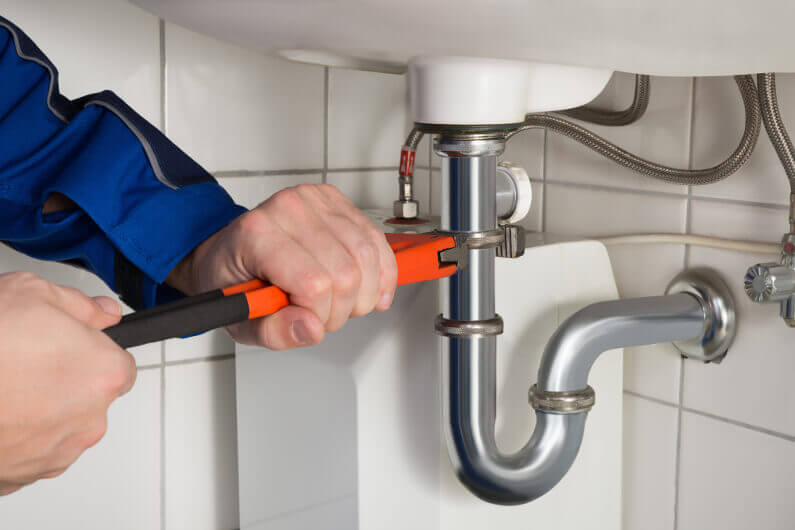Suburban Plumbing Blog
Plumbing Articles from Orange County, CA.
9 Really Cool Plumbing Facts and Myths You Should Know About

Porcelain throne, loo, lav, commode, head, privy, water closet, john, dunny, potty — these are just a few of the euphemisms we use when referring to the toilet or the bathroom in general. No matter what you call it, there are many myths and misconceptions about this essential aspect of domestic life.
Today we’re taking a look at some of the most widely believed plumbing myths in order to separate them from plumbing facts. So sit right back and settle in for some toilet trivia!
1. Thomas Crapper Didn’t Invent His Namesake
Perhaps the most widely believed plumbing myth of all is that a fellow named Thomas Crapper invented the flush toilet, leading to another of its popular monikers. It’s not true, but it’s easy to see how the misunderstanding started.
Crapper was a plumber and an inventor, who held three patents for various toilet-related designs. One is the now-standard U-shaped plumbing trap, which helps keep sewer gasses and odors from wafting into the bathroom. And his name did appear on porcelain toilets, manhole covers, and other items. But the flushing toilet had been around for some time, if not quite a household item, by the time Crapper came around.
2. The First Queen Elizabeth Could Flush
In fact, a fellow named Sir John Harington built a toilet with a flushing mechanism way back in 1596. He took this leap of indoor-plumbing progress prior to a very special visitor, Queen Elizabeth I, who happened to be his godmother.
There is additional evidence pointing to the existence of the flush toilet even earlier in history, perhaps as far back as 1400. At the time, and for several centuries afterward, this mod con was simply too expensive to find widespread popularity.
3. So-Called “Flushable” Wipes are an Environmental Nightmare
Disposable wipes are certainly convenient, but it turns out that they’re not always as “flushable” as their manufacturers would like us to think. The idea behind them is that they’ll disintegrate over time, but they’re not living up to that promise.
Instead, they are combining with tampons, sanitary napkins, and massive amounts of cooking oil to create enormous blockages in sewers across the globe. These monstrous things have been dubbed “fatbergs” in a nod to their size — and as you might imagine, they are extremely difficult to eradicate.
4. The Hemisphere Has No Impact on Draining Direction
Does the water in an Australian toilet really circle clockwise? Sadly, no. Cyclones do twist in the opposite direction down under, thanks to something called the Coriolis Effect. Toilet water is simply too insignificant to be prone to that effect, however.
If you’re vacationing in the Southern Hemisphere and do come across a toilet that flushes in a clockwise manner, that’s simply because its water jets are aimed in that direction.
5. Snakes Can Slither Up from the Sewers
This one sounds like an urban myth, but is actually another of the plumbing facts! There have been documented cases of creatures suddenly appearing in toilet bowls. Some of these very unwelcome intruders are snakes, rats, iguanas, frogs, squirrels, possums, and fish.
This disturbing and surprisingly commonplace happening became a big problem in Seattle a few years back. The local government even issued a set of official guidelines for homeowners, including the very helpful suggestion of flushing repeatedly.
6. Alligators Have Made New York’s Sewers Home
Here’s another time-honored tale that, while decidedly outlandish, does seem to have a grain of truth to it. In 1932, residents of the Bronx were surprised to see a gator lounging on the Bronx River’s bank. Three years later, a couple of teenagers, engaged in shoveling snow from the streets of East Harlem, stumbled across an alligator nosing its way out from under a manhole cover.
There have been accounts of subterranean snapping turtles, as well. Experts advise that while there are probably are a few gators swimming around underneath the city’s surface, there’s really nothing to fear.
7. Plumbing Pipes Are Great Conductors of Electricity
Your mother or grandmother may have cautioned you about not taking a shower during a thunderstorm. It turns out that their anxiety was warranted. Many metal plumbing pipes still exist, and metal is one of the best conductors of electricity. In addition, the impurities in the water can make the pipes even more conducive to electrical current.
The odds of a lightning bolt striking you while you’re in the shower or washing your hands is pretty slim. But play it safe, for your grandmother’s sake, by steering clear of running water when a storm is raging.
8. A Brick In Your Toilet Tank Saves H20
You likely make efforts to conserve water, both for financial considerations and for the health of our planet. So you have probably heard of placing a brick inside your toilet tank. This lifehack sounds as though it might, well, hold water; after all, a large object like a brick would certainly displace water in the tank.
Plumbers warn against this seemingly innocent step, though. For one thing, toilets are carefully designed to operate at a certain capacity. Deliberately tampering with the design in this way could jeopardize the performance of your toilet.
Additionally, the brick itself will break down over time. As it does so, it releases concrete particles, clay, sand, and lime into the tank. It doesn’t take a plumbing expert to predict that these foreign materials can cause problems to the internal components of the toilet.
9. A Minor Drip Isn’t Dangerous
Sure, it’s annoying, but is a leaky faucet really that big of a deal? It’s only a tiny drip, after all. And you can put a sponge in the sink to eliminate the plink-plink-plink noise.
Believe it or not, a dripping faucet can waste water to the tune of over 2,000 gallons per year! That’s pretty irresponsible in terms of the planet, especially at a time when drought is taking a devastating toll in many parts of the world. So don’t delay; get your drips fixed ASAP.
Did You Learn Anything from These Plumbing Facts?
We hope you’ve enjoyed this foray into the world of plumbing facts and myths. Maybe you have even learned a thing or two! If nothing else, you can now set people straight when they trot out that old cliche about Thomas Crapper.
If you do have a leaky faucet, can smell a sewer odor emanating from the toilet, or have a clog in your kitchen sink, give us a call!
Request a Quote Now
suburban plumbing
Full Service Plumbing Orange County, CA.
Suburban Plumbing
14933 Adams Street
Midway City, CA 92655
(714) 922-3555
or Send Us an Email Here.
© 2017-2025 SuburbanPlumbingOC.com
– All rights reserved. –
Information on this website may not be re-used without prior written consent from Suburban Plumbing.
QUICK LINKS
HOME | PLUMBING SERVICES | PLUMBER NEAR ME | REVIEWS | ABOUT | COVID SAFETY | BLOG | COUPONS | CONTACT | SITE MAP
HOURS & LICENSE INFO
Monday-Friday: 8:00am to 7:00pm
Saturday: 8:00am to 5:00pm
Sunday: Closed Normal Appointments
Emergency Client Service Available
California Licensed, Bonded, Insured
C36 Plumbing Contractors License 833520





0 Comments